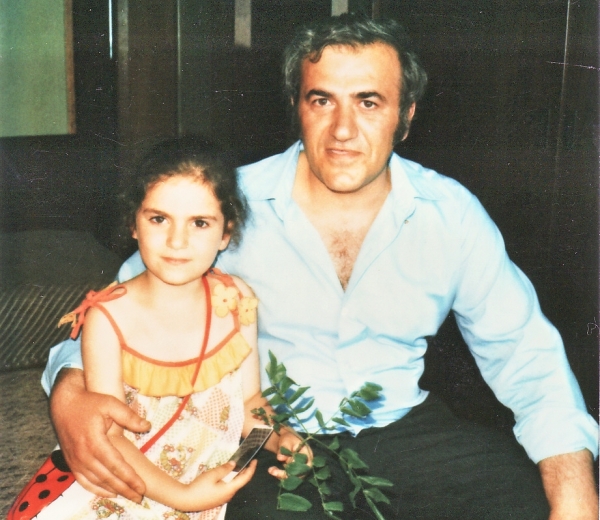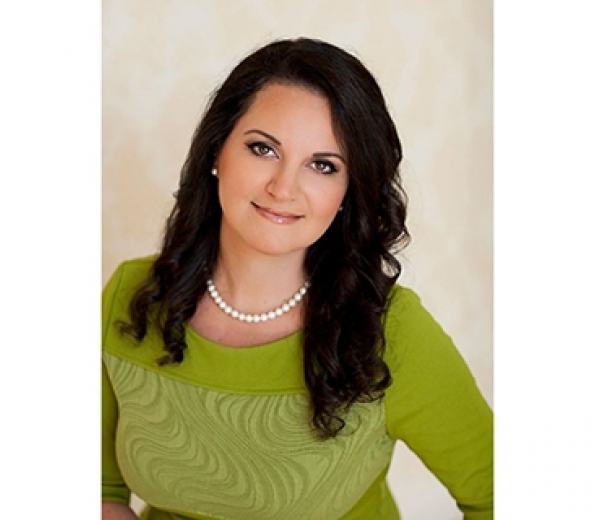Anna Astvatsaturian-Turcotte
Grandfather Yegishe was born in Khndzoresk, in the Syunik region of Armenia. His family died of hunger and illness during the Armenian Genocide. He and his sister Khehina barely survived, and in 1915 fled on a train to Baku in search of safety. Yegishe was only five at the time; for almost all his life he believed Khehina was his mother, rather than his older sister.
The train that took them away from danger at home brought a new addition to their family. As they traveled east they met an Armenian girl, barely a year old. She had a twin and her family was starving, unable to feed every mouth. This little girl had been scarred by fire; her parents, in desperation, were plotting to throw the burned child from the train. Khehina could not let this happen: she intervened and adopted the little girl, who became our Aunt Maria and lived beyond her 90th birthday.
The little family settled in Baku. For generations there had been hundreds of thousands of Armenians living there, so they felt safe at first. Many other Genocide survivors from further West also settled in Baku. But in 1918 the hatred resurfaced. Turkish forces came to the region and the Armenian Genocide was rekindled by the Turkic peoples of modern-day Azerbaijan. Thousands of Baku Armenians were slaughtered in 1918, the entire population was attacked and robbed in every conceivable way.
Once again, Yegishe’s family had to flee for their lives. This time they escaped the slaughter in Baku on a Russian boat that was smuggling Armenian families across the Caspian to Turkmenistan. Many of my family members settled and stayed in Turkmenistan, but after a few years there my grandfather and his family went back across the Caspian to Yerevan. He completed school and university in Yerevan, served in the Red Army during World War II and then returned once again to Soviet Armenia. However, after the war there was little work. Yegishe decided to go back to Baku, a seemingly calm city of opportunities. The Soviet regime promised to protect Armenians in the city and my grandfather took a chance and returned to a rapidly growing industrial center.
My parents were born in Baku, my cousins, my brother and I were born in Baku. Hundreds of my relatives called Baku home. But despite this peace, despite the fact that many Armenians loved Baku and regarded it as their native city, we knew our place and our painful history. Nothing was openly discussed, neither the 1915 Genocide nor the Baku pogroms of 1918. But the elders in the community kept the story alive even as the Soviet authorities paid lip service to an artificial ‘friendship of the nations’ that allowed anti-Armenian sentiment to simmer unchecked for generations.

|
Anna Astvatsaturian-Turcotte with her father |
Two of my great grandmothers were called Anoush, but my parents decided not to give me that traditional Armenian name. Instead they opted for Anna, a neutral, international version. At home we spoke only Russian; my grandparents spoke Armenian among themselves. All things Armenian were kept quiet for fear of standing out. In the 1970s the city’s Armenian schools were closed during a strong wave of Azeri nationalism.
Yegishe knew only too well of the horrors that could be unleashed against Armenians. He decided to Russify our family name, just in case. We were no longer Astvatsaturians. We were now Astvatsaturovs.
Little did he know that this change would save us when a renewed storm of hatred came over us in 1988, ten years after he passed away.
As the Soviet Union began its collapse, the republics of the Union asserted their independence. This also affected Nagorno-Karabakh, land on the hills between Armenia and Azerbaijan that was given to the latter by Stalin. In response to the people of Karabakh and their calls to return to Armenian rule, the Azerbaijani government issued hateful propaganda to inflame ordinary people against their neighbors. First it was the city of Sumgait, then Kirovabad, then Baku itself. There were demonstrations by hundreds of thousands of black-clad men walking the streets with anti-Armenian slogans. They launched attacks on homes, learning the addresses of Armenian families from government informers. My Russian speaking school was constantly raided by rioters looking for Armenian students.
We were reliving the nightmare my grandfather endured, exactly 70 years later.
My father told me to keep my head down when walking on the streets. And if I was asked about my nationality, I should tell them I was Greek. Going to school became first terrifying and then impossible. My Armenian face threatened to betray me when I walked to school along a tank-lined street only to find our administrator had been beaten up for pleading with the mob to leave the children alone.
This was not the Baku I recognized. This city was no longer our home. Yet again, it was a place we had to flee, like hundreds of thousands of other Armenians in Azerbaijan. Some left bruised, beaten, with nothing, in the middle of the night in their bedclothes, boarding ships to nowhere.
We fled Baku along with more than 300,000 Armenians from Azerbaijan.
We arrived to Yerevan on September 18, 1989 and spent almost three years living in a relative’s basement in Kanaker. In 1992 we left as refugees, heading for the United States. My family and my uncle’s family were settled in North Dakota. My parents had just $180 when we arrived. We’ve come a long way.

|
Anna Astvatsaturian-Turcotte |
But we must go further. If justice was served for the victims of the Armenian Genocide in 1915, I believe that the Armenians of Azerbaijan and the Armenians of Nagorno-Karabakh would never have found themselves on the receiving end of on-going anti-Armenian violence and aggression. In my family’s 100-year history we suffered three instances of ethnic violence toward Armenians.
We cannot let it happen again. For the sake of our ancestors and our children we must stop this genocidal cycle.
About author: Anna Astvatsaturian Turcotte is a writer, human rights activist and lecturer. In 2012 Anna published her book Nowhere, a Story of Exile, which she wrote at the age of 14 as her family settled in North Dakota. The book is based on the childhood diaries she kept as her family was fleeing Baku, Azerbaijan and during life in Armenia as a refugee. In September, 2013, Anna became the recipient of Mkhitar Gosh Medal, Republic of Armenia’s highest civilian honor awarded by President Serge Sargsyan for exceptional achievements in the political-social spheres, as well as outstanding efforts in the fields of diplomacy, law, and political science.

